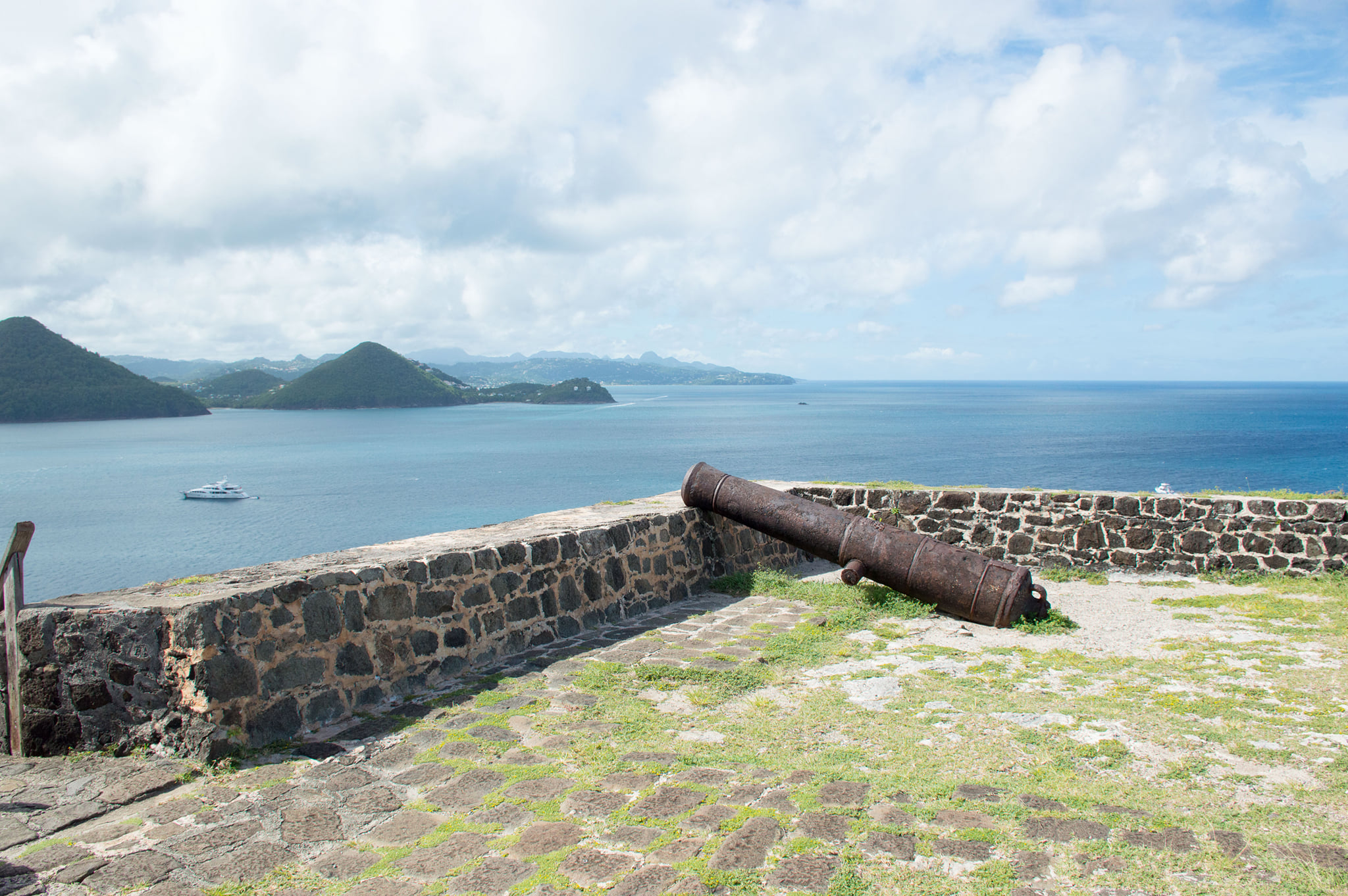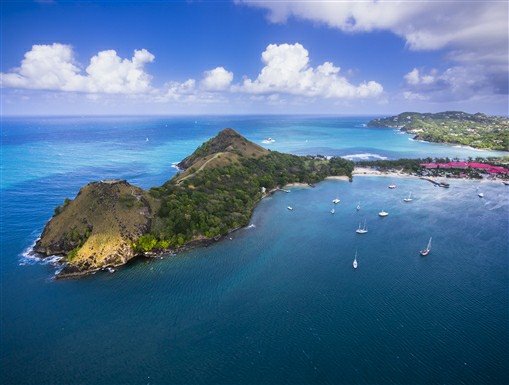Pigeon Island, an enchanting and historically significant site in Saint Lucia, is a must-visit spot for anyone traveling to this Caribbean paradise. Its vibrant past and natural beauty make it an intriguing destination for history buffs and nature lovers alike. This article will give you an in-depth look at Pigeon Island, its rich history, and the many activities it offers.
The Historic Significance of Pigeon Island
The Island’s Past
Pigeon Island, originally a separate islet, was connected to the northern part of Saint Lucia in 1971 through a man-made causeway. The island’s historical significance is so immense that the local schools include its story in their history curriculum.
Saint Lucia, fondly known as the island’s heart, was alternately ruled by the British and French seven times each. Pigeon Island, being strategically critical, was frequently at the center of these power struggles.
The Saint Lucia National Trust, responsible for maintaining the Pigeon Island National Landmark, describes it as a living memorial of the civil, military, and international events that have shaped West Indian cultural change.
Early Inhabitants and Pirates
The first known inhabitants of Pigeon Island were the Amerindians, specifically the Arawaks and the Caribs, with the fiercer Caribs dominating. Later, the island became a haven for pirates, most notably Captain Francois Le Clerc, known as ‘Jambe de Bois’ (Peg Leg), who used Pigeon Island as a base for his adventures in the Caribbean and beyond.
British and French Rule
The island’s strategic location made it an ideal lookout point. The British and French built several forts here to monitor enemy movements. The British, in particular, used Pigeon Island to spy on the French in Martinique, with Admiral Rodney often monitoring Fort Royal from here.
Fort Rodney: A Historical Landmark
In the 18th century, British Admiral George Rodney transformed Pigeon Island by building forts to guard against enemy attacks. The most famous of these structures is Fort Rodney, built in 1778 on the smaller of the two peaks in Pigeon Island National Landmark. This fort and others in the area served as the first line of defense for the British, alerting them to approaching enemies.
A Portal to the Past: Pigeon Island Museum and Interpretation Center
The Saint Lucia National Trust has worked diligently to preserve and restore Pigeon Island, ensuring its rich history and lush greenery remain intact. As part of this effort, they established a museum and interpretation center on the island. Housed in a building that once served as a mess hall for soldiers, the center focused primarily on the Battle of the Saints and other significant events in Pigeon Island’s history.
Pigeon Island: A Venue for Festivals
Pigeon Island, with the Caribbean Sea on one side and the Atlantic Ocean on the other, has been the venue for the Saint Lucia Jazz Festival. This festival has seen performances by world-renowned artists such as Rihanna, UB40, Neyo, John Legend, The Jacksons, Mary J Blige, and Elton John. Pigeon Island National Park hosts several other events annually, including the Roots & Soul Festival and Saint Lucia Carnival.
Things to Do at Pigeon Island
1. Explore the Ruins
The ruins on Pigeon Island are a sight to behold. You can hike to both peaks located within the park – Fort Rodney and Signal Peak – for some breathtaking views. Although the climb to the top is a bit challenging, it’s worth it for the panoramic views and the refreshing ocean breeze.
2. Enjoy the Secluded Beaches
There are two secluded bays within the park perfect for picnics, snorkeling, and snuba tours. The waters here are crystal clear, and the white sand is well maintained, making it an ideal spot for relaxation.
3. Get Married
Pigeon Island is a popular spot for weddings, thanks to its tranquil beauty and historic charm. The park offers a peaceful and picturesque setting for couples to exchange their vows.
4. Walk the Nature Trail
Nature enthusiasts will love the 44 acres of protected greenery within the park. Pigeon Island is a great location for a half or full-day outing.
5. Dine at Barnacles Restaurant
Located within the Pigeon Island National Park, Barnacles Restaurant provides a private and exclusive dining experience with delectable meals.
6. Plan a Photoshoot
With its stunning beachside views, ancient ruins, and grassy slopes, Pigeon Island provides the perfect backdrop for your vacation photos.
7. Visit Nearby Locations
The Sandals Golf and Country Club, one of the most popular golf courses in the Caribbean, is just a short distance away from Pigeon Island.
Frequently Asked Questions
When can I go to Pigeon Point Beach?
Pigeon Point beach is accessible throughout the year. The beach is particularly lively on weekends, with beach parties and local bars in operation.
What is the view like?
From Signal Point at Pigeon Island National Park, you can see the Pitons in the south of the island and the island of Martinique on clear days.
What kind of visitor is this point of interest good for?
Pigeon Island is ideal for adventurers who love being outdoors, taking photos, and hiking.
How much does it cost to enter?
The entrance fee is $8, with private tours costing more.
How do I get there?
You can reach Pigeon Island by boat or car. If you’re driving, the island is just five minutes past the road leading into the town of Gros Islet.
Conclusion
Pigeon Island offers a unique blend of history, culture, and natural beauty. Its charm and tranquility make it a must-visit destination for anyone traveling to Saint Lucia. Whether you’re a history buff, a nature lover, or just looking for a relaxing getaway, Pigeon Island has something to offer everyone.
—
Be sure to tag us in your photos and videos @resortcaribbean, and follow our socials: Instagram, Facebook, YouTube.






![What You Need to Know before Visiting Azul Beach Resort Negril Jamaica Gourmet All-Inclusive [Resort Review] Azul Beach Resort Pool](https://resortcaribbean.co/wp-content/uploads/2021/09/20210828_091210-2-100x70.jpg)
![Visiting Ocean Coral Spring – One of Jamaica’s Most Famous Resorts [Resort Review] Visiting Ocean Coral Spring - One of Jamaica's Most Famous Resorts](https://resortcaribbean.co/wp-content/uploads/2021/11/20211106_155809-100x70.jpg)
![What is it like Visiting Iberostar Rose Hall Beach, Iberostar Grand Rose Hall, Iberostar Selection Rose Hall Suites? [Resort Review] What is it like visiting Iberostar Rose Hall Beach, Iberostar Grand Rose Hall, Iberostar Selection Rose Hall Suites?](https://resortcaribbean.co/wp-content/uploads/2023/03/20151129_122732-100x70.jpg)
[…] What to Know about Pigeon Island Saint Lucia […]